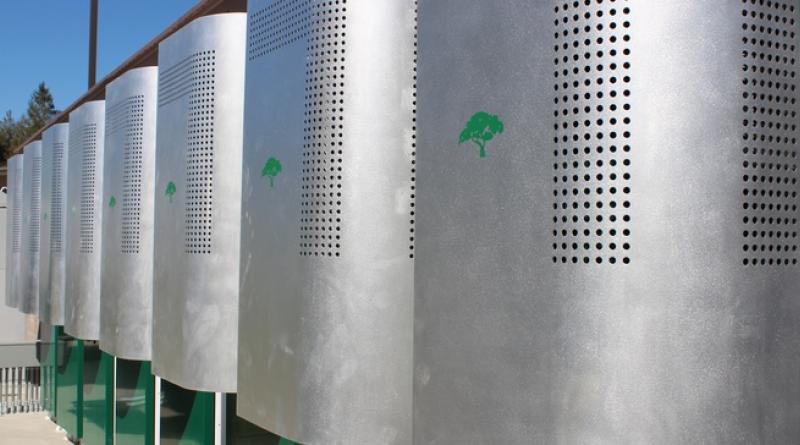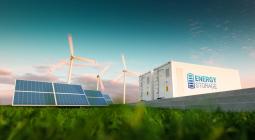Beating China at the lithium game — can the US secure supplies to meet its renewables targets?

The following is a contributed article by Teague Egan, founder, CEO and product architect of EnergyX.
We have all been witness to the meteoric rise of Tesla's stock price since the beginning of the year. With a market capitalization now worth significantly more than Ford and GM combined, the electric vehicle producer and battery maker is showing us the way to a sustainable energy future.
Others are following in Tesla's footsteps. GM has recently announced a $2.3 billion joint venture battery factory, in partnership with LG Chem, to produce cells for 20 new electric vehicles the company plans to introduce globally by 2023. Ford has announced plans for several all-electric vehicles including its widely popular F-150. The future is upon us, but a few obstacles remain in our path.
A major component for both electric vehicles (EVs) and large-scale battery storage for renewable energy production, lithium is set to play a key role in the renewable energy revolution. Both EVs and such energy storage rely on lithium as an absolutely essential, non-replaceable component of the battery, making the metal one of the most sought after resources on the energy market. People are already calling lithium "white petroleum", and I am convinced over the coming decades it will replace oil and gas as the most important natural resource in the world; the backbone to our energy infrastructure.
Demand for battery energy storage is expected to grow exponentially over the next 10-20 years and beyond, underpinned by increasing awareness of the need to limit fossil fuel usage. As a result, lithium demand in 2018 of 270,000 metric tons of Lithium Carbonate Equivalent (LCE) is expected to reach more than 1,000,000 metric tons of LCE by 2025, with some estimates as high as 1.5 million.
As the importance of lithium-ion batteries grows for residential, commercial and military use, the criticality of establishing and expanding domestic sources of lithium is an important national security issue. However today, the U.S. contributes less than 2% of world supply of lithium even though it holds 17% of global lithium reserves. U.S. lithium production has historically been hampered by the relatively low concentration of lithium in U.S. brines, and lack of new technology available to economically extract it.
Resource market
The lack of U.S. domestic lithium production is a critical issue. With production roughly split between hard rock mining and extraction from lithium concentrated brines sources, the vast amount of brines come from sources in Chile and Argentina. However, the world's largest reserve lies in the high mountain deserts of Bolivia. I remember the first time I stepped foot onto Salar de Uyuni, a jaw dropping, 4,000 square mile, national treasure as white as a polar bear. An ocean of lithium lay below the salt crust, just waiting to be utilized in the electric vehicles around the world.
While over 50% of the entire world's reserves can be found in the Lithium Triangle (the brines located in Chile, Bolivia and Argentina), securing access to these reserves and production is highly dependent on the constantly changing geopolitical landscape in the region. Bolivia recently overthrew its government in a coup, ousting President Evo Morales in a bid to accelerate commercial lithium production. The country has been battling internally for 12 year trying to unlock its white petroleum. In December 2019, Chile was forced to cancel COP25, the United Nations climate conference, due to nationwide labor protests, and riots in the capital city of Santiago. Meanwhile, Argentina has been suffering from extreme levels of inflation and other political and economic struggles for years.
China is a critical player, too.
In its Energy Resource Governance Initiative, the U.S. State Department notes that: "over 80% of the global supply chain of rare earth elements, important minerals for electric vehicles and wind turbine components, is controlled by one country." China has been supporting lithium and copper mining operations globally, and has had a hand in funding new nickel mines, as it seeks to satisfy its demand for EVs.
In December 2018, Tianqi, a Chinese manufacturing company, bought a 23.8% share in Chilean-based SQM, the world's second largest lithium producer, from Canadian fertilizer company Nutrien for $4.1 billion, the largest deal in history for a lithium asset. Moves like this are further solidifying China's dominance on the sector. Already, the global leader in sales and production of electric vehicles, Beijing's mining and manufacturing prowess has left Washington behind.
China controls 51% of the global total of chemical lithium, 62% of chemical cobalt and 100% of spherical graphite — the major components of lithium-ion batteries. The United States is at risk of missing out on its renewable targets and needs to secure lithium deposits to help drive its renewable and sustainable development industries.
The Trump administration has vastly increased traditional fossil fuel production as it also has championed so-called ‘clean-coal' and natural gas, while Beijing's dominance in the renewable energy and electric vehicle markets has led to a quiet transition in industry priorities. Far from reducing fossil fuel subsidies or moving away from coal-powered energy generation, the State Department is looking for a way to limit China's dominance on renewable energy. The U.S. is missing the boat.
This means that the Trump administration will have to invest in a market it has repeatedly spurned. Following in the steps of China and the European Union, in 2017, the United States cited the economy and national security as it directed scientists to find a new source of lithium within the nation's borders. "Global investment in mineral-intensive renewable power generation and battery storage technologies continues to outpace investment in fossil fuel power generation by over 100 percent annually," the State Department posited last June as it explained that it is seeking to "promote integrated and resilient supply chains."
American-made
In a move that echoes the State Department's initiative, Tesla's Elon Musk recently announced that the company will foray into lithium mining to secure its own resource. The leading American company driving U.S. interests in the lithium-ion battery supply chain, Tesla has massive factories in both California and Nevada. These are strategically located in close proximity to lithium reserves in the Salton Sea, CA and Silver Peak, Nevada, where Albemarle (the top lithium producer) has operations, and only 400 miles from the Great Salt Lake, Utah, where Cargill operates high lithium concentrated salt production.
Tesla is not just the world's largest electric vehicle manufacturer but also a leading innovator in battery technology and the supply chain associated therewith. The company has long promoted electric vehicles and sustainable engineering, with its large-scale battery in South Australia also changing how nations view renewable energy storage.
While Tesla has been leading the private sector, federal departments have also been working towards improving the United States' position as a major force in the global lithium market. In January, former Energy Secretary Rick Perry announced several new initiatives: "The Department of Energy (DOE) will leverage the power of competition and the resources of the private sector, universities, and the National Laboratories to develop innovative recycling technologies, which will bolster economic growth, strengthen our energy security, and improve the environment."
Race for lithium
America can do better! We are not followers; we do not wait for others to take the lead, and we are not going to wait on the sidelines of the most important global transition of the century. From the Industrial Revolution to the Space Race, competition between the United States and other major powers has always driven innovation.
A quiet transition away from the Trump Administration's stance on energy will help the U.S. build a strong foundation to compete internationally. China's lead in the electric vehicle and renewable energy markets, as well as its dominance throughout the production chain, have created a sense of urgency in the U.S.
To meet its renewables targets, the U.S. needs to secure its lithium supplies or find a different way to compete with Beijing's mining and manufacturing prowess. The State Department's initiative and actions from Tesla and the Department of Energy show that Washington is serious about competing in global markets.
With the new energy race heating up, several companies are looking to develop what's being dubbed "direct lithium extraction" technologies that can increase the efficiency and effectiveness of lithium production.
Production from brine takes an average of 18 months with recovery rates as low as 30%. Furthermore, many lithium deposits are located in hard to reach areas, and conventional methods are impractical due to geographical terrain, lower than optimal concentrations, or external elements such as weather. Direct lithium extraction is the answer the U.S. is looking for to catch the Chinese in this ever important rivalry, and in the near future, we will become self-reliable on white petroleum.
18 February 2020
UTILITY DIVE





